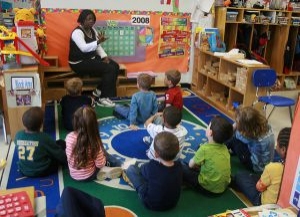Critical reflection is a powerful tool for understanding and addressing challenging behaviours in young children. Here are some reflective questions you might consider when analysing a child's behaviour. The following article provides information on: Reflective Question When Analysing A Child's Behaviour, Applying These Reflection Questions In Practice, Example in Practice, Example Of Reflection Questions In Action and more.
Reflective Question When Analysing A Child's Behaviour
- What is the child's perspective? - How might the child be feeling or thinking in the moment? Consider their emotions and thoughts.
- What triggers the behavior? - Are there specific situations, environments, or interactions that seem to precede the challenging behavior?
- What are the child's needs? - Is the behavior a way of expressing unmet needs, such as hunger, tiredness, or a need for attention and connection?
- What are the underlying causes? - Are there developmental, environmental, or social factors contributing to the behavior?
- How does the environment influence the behavior? - Are there aspects of the physical or social environment that might be contributing to the behavior?
- What are the child's strengths? - What positive attributes or skills does the child have that can be leveraged to address the behavior?
- How do my own responses affect the behavior? - Reflect on how your reactions and interactions with the child might influence their behavior. Are there ways to change your approach?
- What strategies have been tried, and what were the outcomes? - Review any interventions or strategies that have been used in the past and their effectiveness.
- How can I support the child's emotional and social development? - Consider ways to help the child develop skills to manage their emotions and interact positively with others.
- Who can I collaborate with? - Are there other professionals, family members, or resources that can provide support or insights?
By reflecting on these questions, you can gain a deeper understanding of the child's behavior and develop more effective strategies for support.
Applying These Reflection Questions In Practice
Applying these reflection questions in practice involves a systematic approach to observing, documenting, and responding to a child's behavior. Here are some steps to integrate these questions into your daily practice:
Observation and Documentation:
- Regularly observe the child's behavior in different settings and contexts. Take detailed notes on what you see.
- Document specific instances of challenging behavior, noting the triggers, environment, and your responses.
Reflection and Analysis:
- Set aside time to reflect on the documented behaviors. Use the reflection questions as a guide.
- Consider discussing your reflections with colleagues or mentors to gain additional perspectives.
Developing Strategies:
Based on your reflections, develop tailored strategies to address the behavior. These might include changes to the environment, your interactions with the child, or specific interventions to support the child's needs.
- Implement these strategies consistently and monitor their effectiveness.
Collaboration:
- Involve other professionals, such as speech therapists or child psychologists, if needed.
- Communicate with the child's family to understand their perspective and enlist their support.
Continuous Review:
- Regularly review and adjust your strategies based on the child's progress and any new insights you gain.
- Keep the reflection questions in mind as you continue to observe and interact with the child.
Supporting Emotional and Social Development:
- Incorporate activities and routines that support the child's emotional and social development, such as mindfulness exercises, social stories, and role-playing.
Example in Practice
Imagine you're working with a child named Sam who often becomes disruptive during group activities. Here's how you might apply the reflection questions:
Observation:
You notice Sam becomes disruptive when the group activity involves a lot of noise and movement.
Reflection:
- What is the child's perspective? Sam might feel overwhelmed by the noise and activity level.
- What triggers the behavior? High noise levels and crowded spaces.
- What are the child's needs? Sam might need a quieter, more structured environment.
Strategy Development:
- Create a quiet corner where Sam can retreat if he feels overwhelmed.
- Use visual schedules to help Sam understand and anticipate the flow of activities.
- Provide noise-canceling headphones if needed.
Collaboration:
Discuss your observations with Sam's parents and see if they notice similar behaviors at home. Work together to develop consistent strategies.
Review and Adjust:
Monitor Sam's response to the new strategies and adjust as needed. Reflect on whether the changes are helping Sam feel more comfortable and engaged.
By systematically applying these reflection questions, you can develop a deeper understanding of each child's needs and create a supportive and responsive environment for their development.
Example Of Reflection Questions In Action
Here are some example answers to these reflection questions, based on a hypothetical situation with a child named Alex, who often has tantrums during transition times:
- What is the child's perspective?
Alex might be feeling anxious or overwhelmed during transitions. He might not understand what is expected of him or feel unsure about what is coming next.
- What triggers the behavior?
The tantrums seem to occur during times of transition, such as moving from playtime to mealtime or getting ready to leave the classroom.
- What are the child's needs?
Alex may need more support during transitions, such as clear and consistent routines, visual cues, and reassurance from caregivers.
- What are the underlying causes?
Alex might have difficulty with changes in routine or might struggle with sensory processing, making transitions particularly challenging.
- How does the environment influence the behavior?
The classroom environment might be too stimulating or chaotic during transition times, contributing to Alex's anxiety and resulting in tantrums.
- What are the child's strengths?
Alex is very creative and enjoys hands-on activities. He is also very social and enjoys interacting with his peers.
- How do my own responses affect the behavior?
Reflecting on my responses, I realize that I might become stressed during transitions, which Alex could be picking up on. Staying calm and using a soothing tone might help Alex feel more secure.
- What strategies have been tried, and what were the outcomes?
We have tried giving Alex warnings before transitions, but this has only been somewhat effective. We haven't yet tried using visual schedules or more structured routines.
- How can I support the child's emotional and social development?
Introducing mindfulness exercises or calming activities during transitions could help Alex manage his emotions. Additionally, providing opportunities for Alex to practice social skills in a supportive environment might help him feel more confident.
- Who can I collaborate with?
I can discuss these observations and strategies with Alex's parents to ensure consistency between home and school. Additionally, consulting with a child psychologist or occupational therapist could provide further insights and support.
Further Reading
Descriptive Words For Children's Behaviour
Supporting Children With Challenging Behaviour
Stages Of Behaviour
Redirecting Children's Behaviour
Behaviour Management Plans In Childcare
Talking To Parents About Their Child's Behaviour Issues
Understanding Temperament In Children







 Working as a childcare professional can be a challenge especially when dealing with behavioural problems which may arise. The techniques we use when dealing with
Working as a childcare professional can be a challenge especially when dealing with behavioural problems which may arise. The techniques we use when dealing with There are different types of behaviour that children can display and sometimes it can be hard to manage, especially if a child is having behavioural
There are different types of behaviour that children can display and sometimes it can be hard to manage, especially if a child is having behavioural As a parent, your behavioural expectations of your child can be higher than what is actually developmentally appropriate for your child's age.
As a parent, your behavioural expectations of your child can be higher than what is actually developmentally appropriate for your child's age.
 As Educators, there will be many instances where you will need to write about a child's behaviour. For a behaviour management plan, assessments, half-yearly or
As Educators, there will be many instances where you will need to write about a child's behaviour. For a behaviour management plan, assessments, half-yearly or As Educators when communicating with Parents (through verbal or non-verbal communication), there will be times where we need to discuss issues or concerns that may
As Educators when communicating with Parents (through verbal or non-verbal communication), there will be times where we need to discuss issues or concerns that may Challenging Behaviour is when a child does something that hurts themselves and/or other people.
Challenging Behaviour is when a child does something that hurts themselves and/or other people.
 As part of your child's development it is normal for your child to have anxiety and fears. A baby commonly shows a fearful sign to
As part of your child's development it is normal for your child to have anxiety and fears. A baby commonly shows a fearful sign to It's always difficult to bring up behavioural issues with parents, it can be nerve wrecking to tell a parent that their child misbehaves but that
It's always difficult to bring up behavioural issues with parents, it can be nerve wrecking to tell a parent that their child misbehaves but that All children deal with anger on a daily basis. Thinking about it as a child, there is a lot to be angry about. Elder people
All children deal with anger on a daily basis. Thinking about it as a child, there is a lot to be angry about. Elder people It is important to understand that your child behaviour problems could not just be from attention seeking. There are many factors to take into consideration
It is important to understand that your child behaviour problems could not just be from attention seeking. There are many factors to take into consideration


